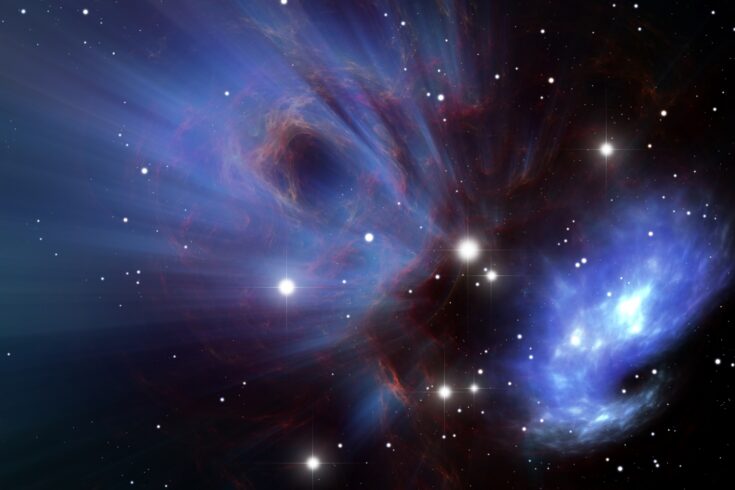The international group of researchers, with UK support from the Science and Technology Facilities Council (STFC) and six UK universities, is led by the US Department of Energy’s Fermi National Accelerator Laboratory. Together, they analysed nearly 1,500 supernovae using machine learning techniques.
The culmination of a decade’s work, their findings provide pivotal new support for the standard model of a universe with an accelerated expansion and mark a historic contribution to our understanding of the cosmos.
Decades in the making
In 1998, astrophysicists discovered that the Universe is expanding at an accelerating rate, attributed to a mysterious entity called dark energy that makes up about 70% of our Universe.
The discovery was achieved by observing exploding stars called type la supernovae, which are a useful constant for scientists because they all have approximately the same brightness.
Now, for its latest study and the final study of the DES Supernova Working Group, the DES collaboration has adapted this same technique to probe the mysteries of dark energy and the expansion of the Universe further than ever before.
Far reaching science
Since beginning operations in 2012, the DES collaboration has mapped an area almost one-eighth the entire sky using a specially constructed ‘Dark Energy Camera’ at the US National Science Foundation’s Cerro Tololo Inter-American Observatory in Chile.
DES scientists analysed the data from this using a range of techniques. This includes comparing the brightness of type la supernovae to determine how quickly they appear to be moving away from Earth due to the effects of dark energy and the expanding Universe.
In doing this, they have been able to determine that the overall density of dark energy in the Universe is likely constant. This provides some of the strongest support yet for the current understanding of the evolution of the Universe, although does not rule out the possibility of something still more complex.
Exciting new possibilities
Dr Philip Wiseman from the University of Southampton, who presented the findings at the 243rd meeting of the American Astronomical Society, said:
Twenty-five years after we first detected that it must exist, we still know very little about dark energy.
That’s part of what makes it exciting. All the data up until now have been consistent with dark energy being a constant but these results open up the intriguing possibility that the density of dark energy could have changed as the universe expands.
Knowing whether it is or isn’t a constant will help us to narrow down the theories as to what dark energy might be.
Significant UK contributions
The DES is an international collaboration comprising more than 400 astrophysicists, astronomers, and cosmologists from over 25 institutions, including several leading UK institutions.
The latest study includes listed research contributions from:
- University College London (UCL)
- Jodrell Bank Center for Astrophysics at The University of Manchester
- University of Nottingham
- University of Portsmouth
- University of Southampton
- University of Sussex
Researchers from the universities of Southampton and Portsmouth played a key role in identifying the type la supernovae and finding the galaxies in which each one exploded. This allows researchers to measure the speed at which the galaxy is receding and make subtle corrections to these measures, offering greater accuracy.
The UK via STFC is also supporting several research programmes that will advance the work of the DES collaboration in the next generation of astronomical surveys. For example, the Rubin Observatory Large Synoptic Survey Telescope, which is currently being constructed in Chile.
Enabling future discoveries
Professor Ofer Lahav at UCL, who has coordinated the DES science programme and the DES UK consortium, said:
Building DES science and instrumentation has been a journey over 20 years, with hundreds of collaborators from around the world, including UK universities.
Alongside the US Department of Energy and other funding agencies for example, STFC has supported the construction of the DES optical corrector, built at UCL.
This new supernovae result has validated beautifully that the universe’s expansion is accelerating, probably due a cosmological constant proposed by Einstein in 1917, or a variant of it. This result paves the way to further ambitious projects supported by STFC to pin down the mysterious nature of dark energy and dark matter.
Further information
The findings were presented at the 243rd meeting of the American Astronomical Society on 8 January and in a paper submitted to the Astrophysical Journal in January titled: ‘The Dark Energy Survey: Cosmology results with ~1500 new high-redshift type Ia supernovae using the full 5-year dataset’.

